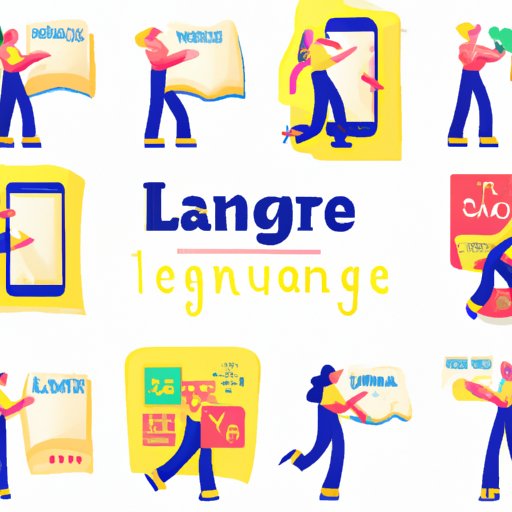
Introduction
Learning a new language is an exciting, valuable skill to have. Whether for personal growth or career advancement, being able to communicate with people from different cultures can broaden your perspectives and provide unique opportunities. However, it can also be a daunting task. Fortunately, there are various techniques that can help speed up the language learning process. In this article, we will explore six techniques on how to learn a language fast.
Create an Action Plan
Having a detailed and structured plan can increase productivity and accountability. By setting specific goals and deadlines, you can track your progress and adjust accordingly. Start by determining how much time and effort you can realistically dedicate to language learning each day or week. Then, break down your plan into manageable steps, such as learning a certain number of vocabulary words or practicing grammar exercises. Include incentives to reward yourself for meeting certain milestones. Lastly, document your progress to review and revise your plan as needed.
Use Immersion Techniques
Immersion can be a powerful tool in language learning. By surrounding yourself with the language, you can develop a better understanding of its nuances and improve your listening and speaking skills. Some examples of immersion techniques include watching TV shows or movies in the target language, listening to the radio or podcasts, or reading books or articles. Try to incorporate these activities into your daily routine whenever possible. If you have friends or family members who speak the language fluently, practice speaking with them.
Find a Language Partner
Practicing with a native speaker can help improve pronunciation and conversational skills, as well as provide insight into the culture and customs associated with the language. There are plenty of websites and apps dedicated to language exchange, such as Tandem, HelloTalk, and MyLanguageExchange. Additionally, attending meetups or joining language communities in your area can be a convenient way to find a like-minded language partner. When practicing with a language partner, make sure to set goals and establish expectations in advance. Encourage each other to speak only in the target language.
Use Language Learning Apps
Language learning apps provide a convenient way to learn a language at your own pace, anytime and anywhere. Some of the most popular language learning apps available today include Duolingo, Babbel, and Rosetta Stone. Each app offers unique features and strengths. For example, Duolingo is a free app that gamifies language learning, while Babbel is known for its comprehensive grammar lessons. It’s important to find an app that works best for your learning style and needs.
Learn Grammar Rules
While learning a language involves much more than just memorizing grammar rules, having a solid foundation of grammar can help make the language learning process smoother. Try pairing each rule with a relevant example sentence and practice using it in context. Flashcards and quizzes can also be useful tools for learning grammar. Some important grammar rules to master early on include verb conjugation, adjective agreement, and sentence structure.
Focus on Vocabulary
Vocabulary is a crucial component of language learning, as it allows you to understand and convey meaning. The best way to learn vocabulary is to practice it consistently. Instead of relying on rote memorization, consider using mnemonic devices, such as acronyms or visual associations, to remember new words. Creating flashcards or word lists can also help reinforce new vocabulary. Additionally, try associating new vocabulary with images or real-life situations for better retention.
Conclusion
Learning a language fast may seem daunting, but with the right techniques and mindset, it can be a rewarding and attainable goal. By creating an action plan, using immersion techniques, finding a language partner, utilizing language learning apps, learning grammar rules, and focusing on vocabulary, you can accelerate your language learning process.




